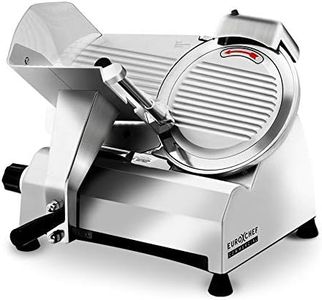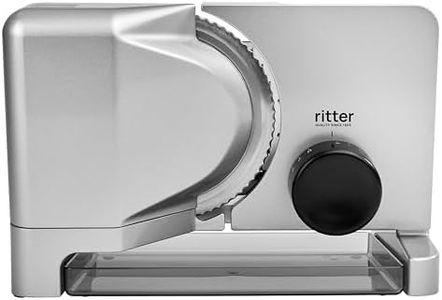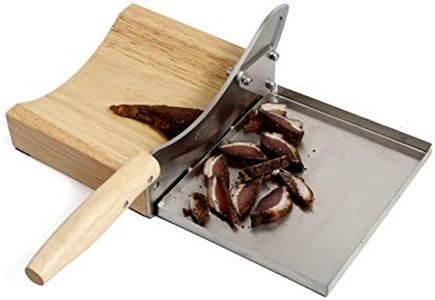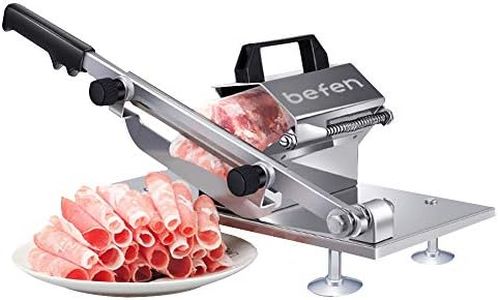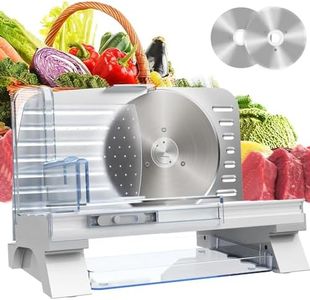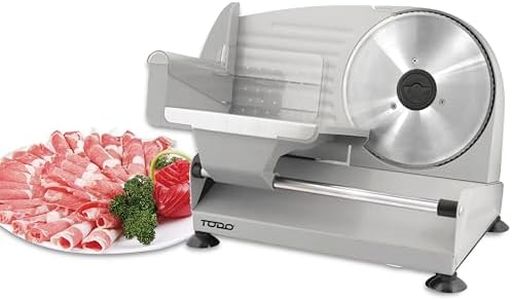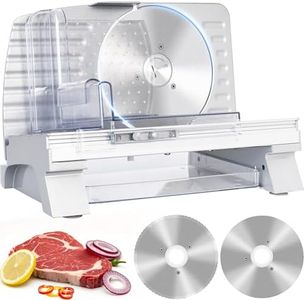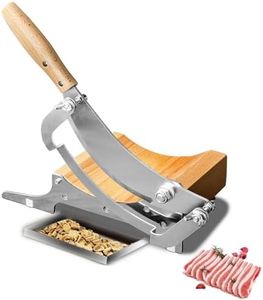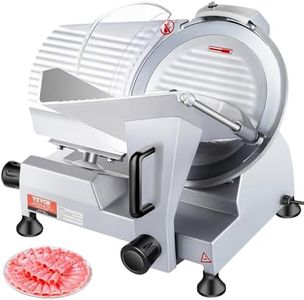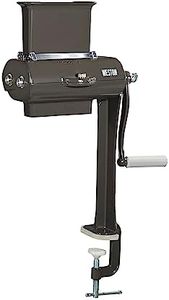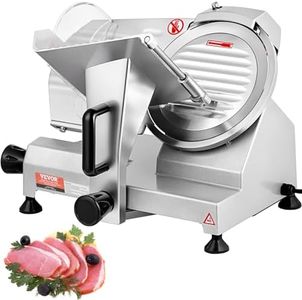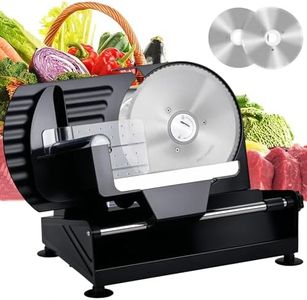We Use CookiesWe use cookies to enhance the security, performance,
functionality and for analytical and promotional activities. By continuing to browse this site you
are agreeing to our privacy policy
10 Best Meat Slicers
From leading brands and best sellers available on the web.By clicking on a link to a third party's website, log data is shared with that third party.
Buying Guide for the Best Meat Slicers
Choosing the right meat slicer is all about matching your needs in the kitchen with the machine’s capabilities. Meat slicers can help you achieve consistent, precise cuts for everything from deli meats to cheeses and even some vegetables. Before making a choice, think about how often you plan to use it, what kinds of foods you’ll be slicing, and how much space you have available. By understanding the most important specifications, you’ll be able to find a slicer that’s easy to use, safe, and perfectly suited for your food prep routine.Blade SizeBlade size refers to the diameter of the cutting blade. It’s important because it determines what types and sizes of food you can slice. Smaller blades around 7-9 inches are best for occasional home use and slicing smaller items like sausages, cooked meats, or cheeses. Medium blades, typically between 10-12 inches, offer more versatility for regular home use or light commercial settings, handling everything from deli meats to larger roasts. Blades larger than 12 inches are found mostly in commercial meat slicers and are suitable for frequent, heavy-duty use or for slicing larger, tougher cuts. Consider how much and what kind of food you’ll be slicing—smaller, thinner items can be managed by a smaller blade, while regular slicing of larger cuts needs a bigger blade.
Motor PowerMotor power tells you how strong the slicer is, often stated in watts or horsepower. This matters because a stronger motor can slice through tougher, denser meats more easily and won’t overheat as quickly. For light, occasional use (like slicing soft deli meats or veggies), a lower-powered motor under about 200 watts is fine. For more frequent use, slicing tougher meats, or running the slicer for longer periods, look for a more powerful motor closer to or above 200 watts. If you anticipate slicing semi-frozen meat or using the slicer for long prep sessions, a higher power rating is best. Match the motor strength to how often and what you slice most.
Adjustable Slice ThicknessAdjustable slice thickness allows you to choose how thin or thick each slice of food will be. This is crucial for versatility—thinner settings are ideal for sandwich meats, while thicker slices suit roasts or cheese platters. Most slicers offer a range covering very thin to quite thick (usually from about 0 up to 1/2 inch or more). Think about what you’ll be slicing and your household’s preferences. If you like paper-thin ham and thick sliced turkey, choose a model with a broad and easy-to-adjust thickness range.
Build MaterialBuild material refers to what the main parts of the slicer are made of. Stainless steel is durable, easy to clean, and long-lasting, making it a top choice for frequent use. Aluminum is lighter and often found in home-use slicers, and can be a good balance between weight and strength. Plastic is used in some budget or lightweight models but may not be as durable over time. Consider how often you’ll use the slicer and your priorities around weight, maintenance, and longevity—a metal (steel or aluminum) build is usually more robust and hygienic for frequent use.
Safety FeaturesSafety features include things like blade guards, non-slip feet, safety locks, and hand guards. These features are very important, as they help prevent accidents and injuries during operation and cleaning. Beginners and households with children should look for slicers with comprehensive safety measures like reliable guards and automatic blade covers. Even for experienced users, good safety design makes the slicer easier and more comfortable to use. Choose according to your confidence and who will be using the slicer most often.
Ease of CleaningEase of cleaning is about how simple it is to take the slicer apart and wash it after use. Slicers come into direct contact with meat and cheese, so cleaning is essential for hygiene. Some models have removable blades and trays, which make cleaning much easier. Others may require more effort to reach all the crevices. If you’ll be using the slicer frequently or with sticky foods like cheese, pick a model designed for simple disassembly and dishwasher-safe components if possible.
Size and StorageSize and storage refer to the physical dimensions of the slicer and how easily you can store it when not in use. Larger machines offer more power and versatility but can take up considerable space on your counter or in a cabinet. Compact slicers are easier to store but might have limitations in blade size and motor strength. Think about your kitchen space and how often you plan to keep the slicer out or put it away. Choose a slicer size that fits comfortably in your storage space and suits your frequency of use.
